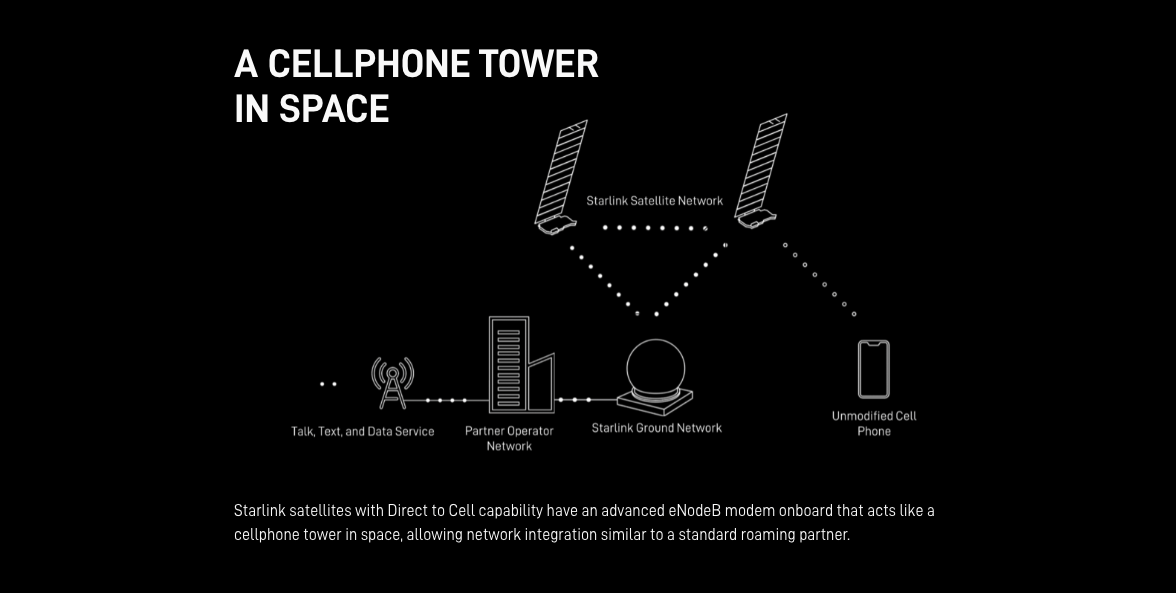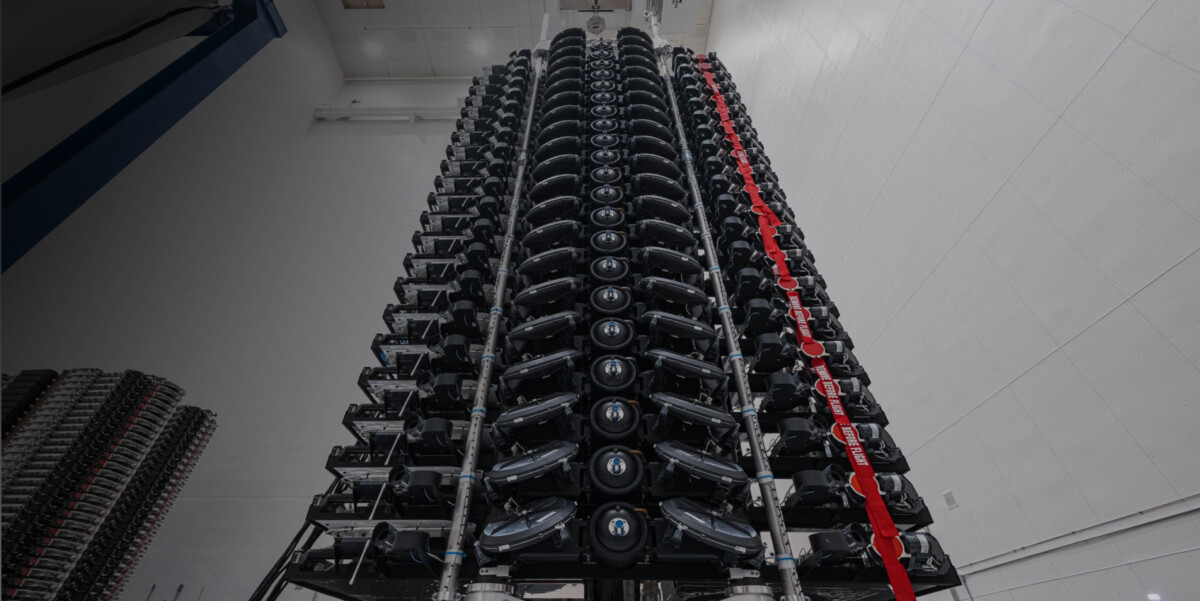Starlink lifts the veil on “Direct to Cell”, an initiative aimed at building a direct technological bridge between satellites and our smartphones.
Starlink, a subsidiary of Elon Musk’s SpaceX, announces a new chapter in its offering, seeking to establish a direct bridge between its satellites and our cell phones via a technology called ” Direct to Cell “.
Satellites as 4G relays
The project, audacious, is conceptually intriguing. The technology used is designed to be compatible with all smartphones equipped with chips and antennas for 4G LTE (and therefore all smartphones on the market), offering a new connectivity solution in regions where terrestrial infrastructure could be insufficient or non-existent. The satellites involved in this service will be equipped with an ENodeB modem, usually found in the basic equipment of mobile network stations, thus acting as space relay antennas, positioned hundreds of kilometers above the Earth .

The significant distance between these satellites and end users, compared to that of traditional cellular antennas, naturally raises the question of performance. The speeds, as announced during Starlink’s initial presentations, would be in ranges comparable to those of 3G. The launch strategy comes in two main phases: initially in 2024 with a focus on plain text SMS, then in 2025, Starlink plans to expand its offering to encompass voice and cellular data, which is also a solution for the growing needs of the IoT (Internet of Things) sector. This distinguishes itself from recent iPhone and Huawei models, which are smartphones capable of communicating directly with satellites.
Strategic partnerships and deployment challenges
For the deployment of this service, Starlink has outlined partnerships with various mobile operators in several countries, including Rogers in Canada, Salt in Switzerland, Optus in Australia, One NZ in New Zealand and KDDI in Japan. The choice of these partnerships is not trivial and is part of a logic where the existing network infrastructure of mobile operators is essential. Indeed, although Starlink satellites will play a relay role, the data will then be transmitted via the terrestrial infrastructure of the operator partners to their final destination.
If in France the offer may seem at first glance less relevant, given relatively dense network coverage, the situation changes when we observe the situation in countries such as Australia, where immense areas remain devoid of mobile network. Starlink’s “Direct to Cell” offer therefore aims not only to eradicate these white areasbut also to open up new perspectives in terms of accessibility and connectivity in remote or difficult to access regions on the globe.

However, the thousands of satellites currently in orbit are not suitable for this function. We will have to rely on future deployments. However, with Starlink carrying out launches at a sustained pace thanks to its Falcon 9 and soon Starship rockets, this transition should happen quickly.
Where to buy
Starlink at the best price?
